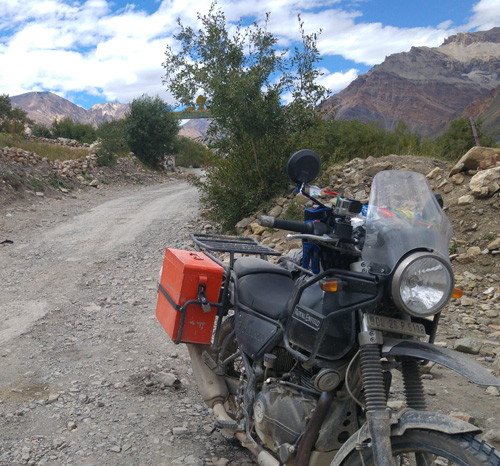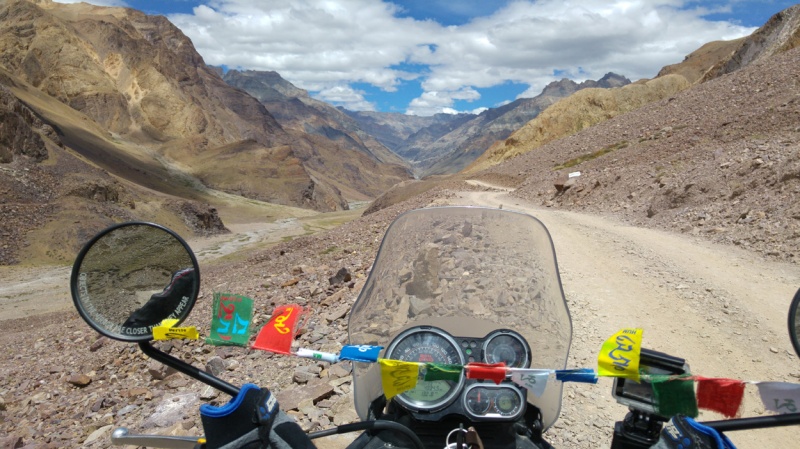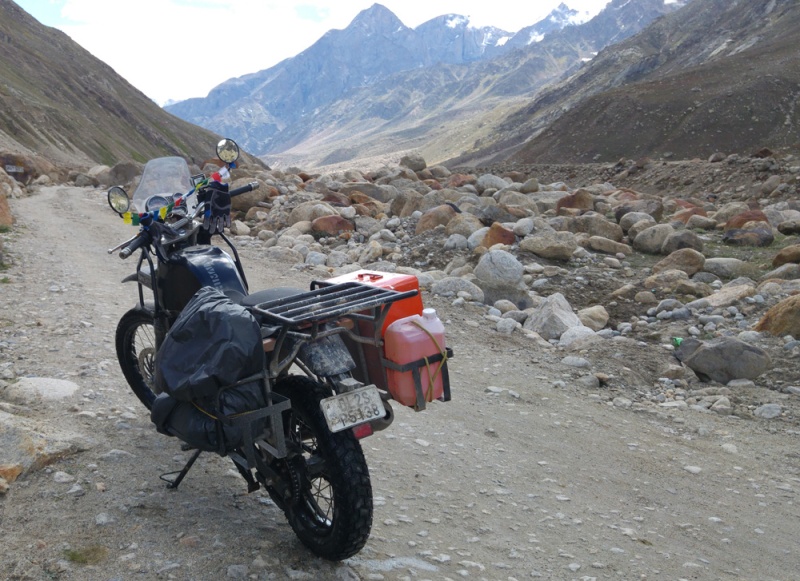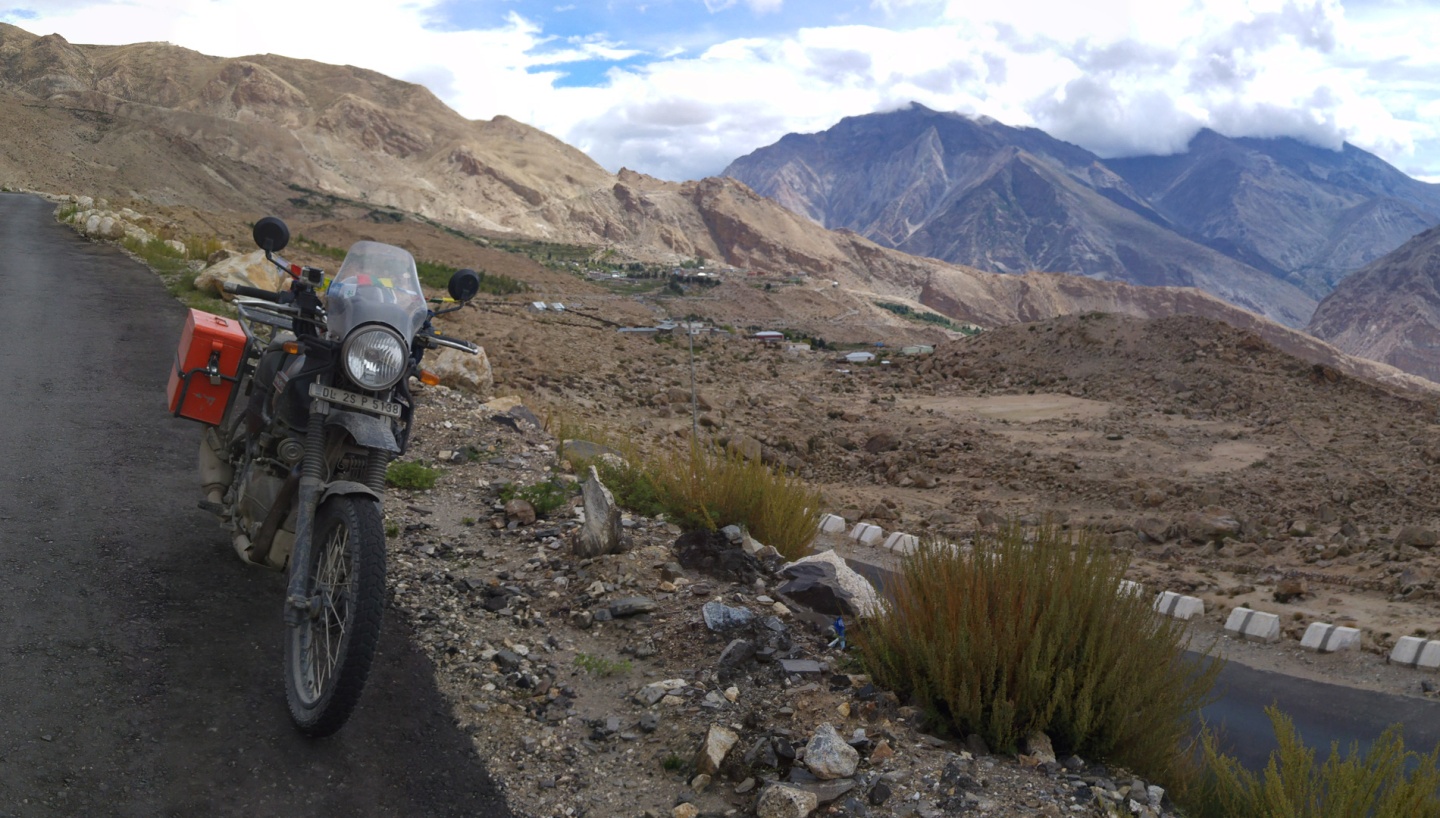Launched in the beginning of 2016 with funfare and a slick website the Royal Enfield Himalayan certainly looked the part – That video with the Himalayan barrelling along a tight ledge of mountain with a silvery DC8 flying alongside was amazingly cool, as was the videos of the bike tackling the tough Himalayan tracks. Touted as the successor to the Enfield Bullet, here was the bike everyone has been waiting for.
Or is it?
I was lucky enough to ride the Enfield Himalayan (“Granite” colored, Royal Enfield takes the Himalayan adjectives to the max.) for almost 2 weeks in Spiti on some really bad roads, along mountain ridges, through numerous water crossings and though the Enfield Himalayan did everything it said it would on the tin, there are some flaws.

The Enfield Himalayan, Royal Enfield’s first adventure tourer, definitely fills a niche market. Built to tackle decrepit Himalayan roads, the bike looks purposeful. Its light and the high handlebars make steering a welcome relief. In clambers earnestly on rocks and pebbles and is amazing on tarmac, especially if you have spent most of your time on the Bullet. The Harris built chassis performs well, and with aftermarket shocks the bike will be a completely different animal as it was a little undersprung for my weight and luggage. The ground clearance is good, not great, but having that skidplate puts my mind at ease.
Unlike the Bullet’s lazy engine, the Enfield Himalayan is much friskier. The Enfield Himalayan sports a 411cc engine, cranking out about 24bhp and 32nm. It works well, better than I expected, but at altitude the engine’s shortcomings are exposed. It just can’t pull as well as the Bullet. Uphill climbs at anything above 2500metres were frustrating, especially when the Bullet zips past you. At 4000metres and above it was useless pulling my 100kg bag of bones up slopes. It’s also missing that satisfying thump of the Bullet.
The Enfield Himalayan has pretty good fuel economy but did they have to put a thimble of a tank on it? At 15 litres, it means you have to carry fuel with you. And part of the accessories is another thimble – a 3 litre jerry can that fits on the side of the tank by the trellis frame.

The dash is all new – nothing like the Bullet’s old fashioned dials. Its funky to say the least, especially the compass. Like most people I have yet to figure out what it does (unless its there to confuse you), or how to use it. The fuel gauge, gear indicator, and trip meter are definitely a plus.
The brakes are excellent – perhaps too good, the rear locks up easy on uneven surfaces. But fortunately it was that much of a bother. The tyres definitely were – the rear to be exact. I couldn’t get the right size tube when I got a puncture. I had to use a Bullet tube, and because it didn’t seat properly I had a wobbling rear wheel that a lot of bikers (and a bunch of car drivers) were eager to point out to me as I rode that long stretch from Shimla to Delhi (its tough getting a proper sized tube anywhere outside of cities – in villages its impossible).

However the engine is the biggest grouse. They came so close and what stopped them from increasing that engine capacity is anyone’s guess. A lot of Indians that I spoke to on the road pretty much knew all about the engine’s shortcomings and were wondering about the lack of capacity.
While the boffins at Royal Enfield have done a sterling job with the Himalayan, the bike still has some ways to go. Perhaps the second generation with come with a bigger engine (and with that thump), and until that happens, the Enfield Himalayan will have a hard time usurping the Bullet.
